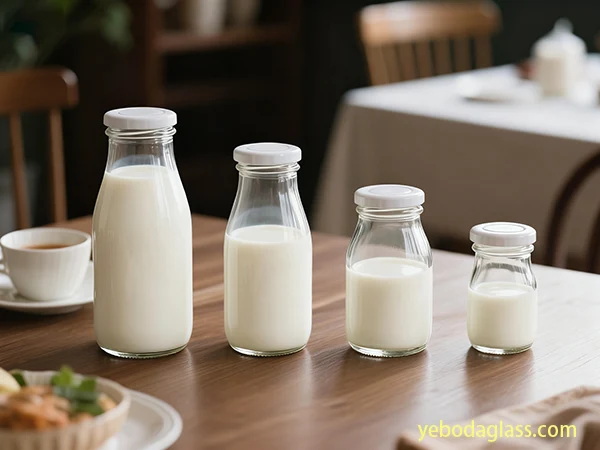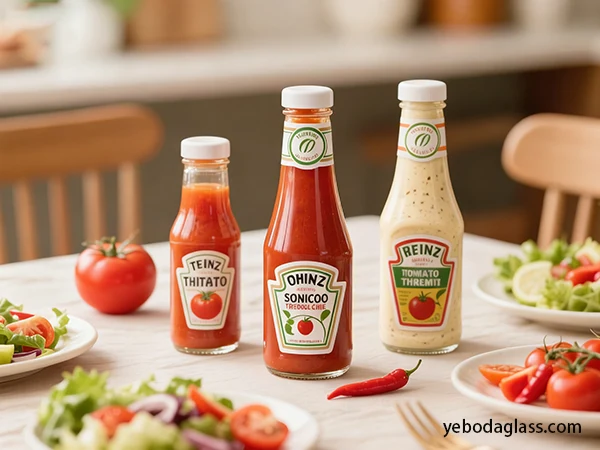Introduction
Have you ever thought about freezing delicious homemade soups, sauces or jams for later enjoyment? Glass mason jars seem to be the perfect container – environmentally friendly, beautiful and practical. But you may have also heard that glass jars are at risk of breaking during the freezing process. What’s going on? Can you freeze glass mason jars safely? And how to properly use them for freezing without any issues?
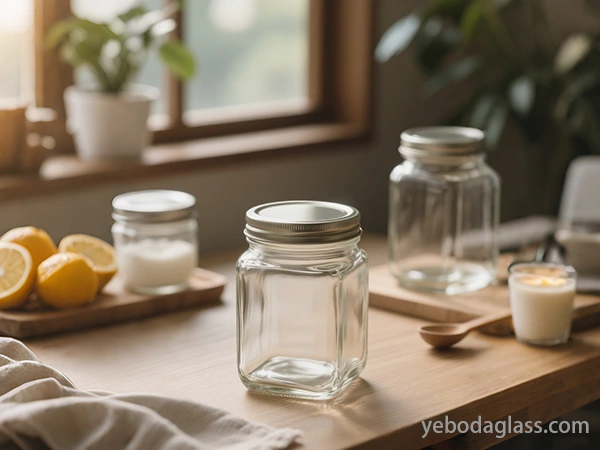
Three core reasons why glass jars break during freezer freezing
Mechanical shock from water expansion
When water freezes, its volume expands by about 9%, which is particularly important in sealed glass jars. When water-containing foods (such as vegetable soups and juices) freeze in glass jars, the pressure generated by the expansion of ice crystals can reach hundreds of Pascals, which is equivalent to applying an “invisible push” to the inner wall of the glass jar. If the material or structure of the glass jar cannot withstand this pressure, it will break from the weak point, which is usually located at the seam or bottom of the jar.
Thermal shock effect caused by sudden temperature changes
Ordinary soda-lime glass (the material of most glass mason jars) is extremely sensitive to temperature changes. Imagine putting a bowl of fresh soup at 60℃ directly into a refrigerator at -18℃. The outer wall of the glass will shrink rapidly due to the low temperature, while the inner wall is still hot. This “unsynchronized” contraction of the inside and outside will form stress inside the glass. When the temperature difference exceeds 50°C (the tolerance limit of annealed glass), cracks may appear instantly, just like the principle of pouring boiling water into a glass in winter and bursting.
Freezing point of food ingredients
Foods with high sugar content (such as jam) or high salt content (such as pickles) will lower the freezing point of water – for example, jam with a sugar content of 40% may not freeze completely until -5°C, and some water may even remain liquid. But this does not mean that the risk disappears: once the temperature drops below freezing, the undissolved water will still expand, and the ice crystal structure produced when a highly concentrated solution freezes is more irregular, and the local pressure on the glass may be greater.
Food types and filling amounts
Water content determines the degree of expansion
The risk of expansion when different foods are frozen varies greatly: liquid foods such as vegetable soups and juices have a water content of more than 90%, and the expansion is most obvious when frozen; semi-solid purees and stews have a water content of about 60%-80%, and the risk of expansion is medium; while dry solid foods such as biscuits and nuts have a water content of less than 30%, and the risk of expansion is low.
Exact standards for headspace reservation
For liquid/high-water foods, leave 1 inch (2.5 cm) headspace. E.g., fill quart mason jars for soup 2.5 cm below the rim to buffer ice expansion.
For solid/low-water foods, 0.5 inch (1.25 cm) headspace suffices—like frozen cut fruit, keep 1.25 cm from the rim.
For shouldered jars (e.g., narrow-mouth mason jars), ensure the liquid level is 1–2 cm below the shoulder to avoid stress cracking. Use jars with a “freezer fill line” and follow it to minimize breakage.
Can selection guide: scientific selection from material to shape
Shape priority: straight-sided jars > conical jars > shouldered jars
- Straight-sided jars have uniform diameters, and the jar body can extend upward evenly when the food expands, making them the first choice for frozen food.
- Conical jars have a narrow bottom and a wide top, which is not only convenient for pouring food, but also can disperse the expansion pressure through the conical structure, making them suitable for freezing sauces.
- The shoulders of traditional narrow-mouthed glass mason jars form a 90° turn. When liquid food is frozen, the shoulders will hinder expansion. The measured breakage rate is more than 3 times higher than that of straight-sided jars, and should be avoided for freezing liquid food.
Double guarantee of material and certification
It is recommended to choose jars made of tempered glass or borosilicate glass. Ordinary kimchi jars purchased in supermarkets have a wall thickness of only 1-2 mm and are not tempered. The risk of cracking during freezing is extremely high and is not recommended.
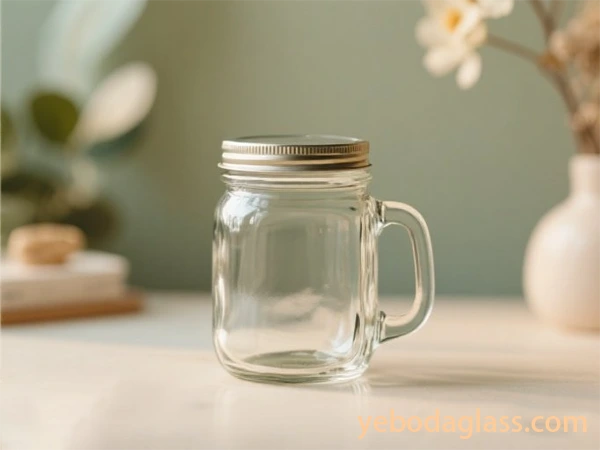
Four-step preparation process before freezing
Food cooling time management
Freshly cooked food needs to go through three stages of cooling: first, cool at room temperature for no more than 1 hour (to avoid bacterial growth) and reduce the temperature to below 25℃; then put it in the refrigerator for 12-24 hours to ensure that the center temperature of the food reaches 4℃; finally, move it to the freezer at -18℃.
Jar safety inspection
Before use, please shine a strong light on the glass jar and carefully check whether there are fine cracks on the jar body (especially the bottom seam), whether there are gaps on the edge of the jar mouth (gaps will cause stress concentration), and whether the lid seal is aged (aged seals may allow air to enter during freezing, increasing expansion pressure). Any defective jars should be discarded.
Use the lid wisely
In the early stage of freezing (the first 24 hours), the lid needs to be loosened (leave 1-2 turns of space at the thread) to allow the air in the jar to expand and discharge as the food expands to avoid excessive internal pressure. After the food is completely frozen (press the jar with your finger, no dents), tighten the lid. It is recommended to use plastic lids or stainless steel lids, which are more corrosion-resistant and have a longer-lasting seal than traditional metal lids.
The deep connection between lid type and frozen preservation
Performance characteristics of different lids
The standard two-piece metal lid has good sealing, but it is easy to rust in a humid environment and is suitable for short-term freezing (1-3 months); the plastic lid with silicone lining has strong rust resistance and is suitable for medium- and long-term freezing (3-6 months); the stainless steel lid with silicone sealing ring has excellent sealing and rust resistance and is suitable for long-term freezing (more than 6 months).
Advanced vacuum sealing tips
Using a vacuum sealer with a special vacuum nozzle for glass mason jars can reduce the residual air in the jar to less than 1%, effectively preventing frostbite (manifested by graying and woody smell on the surface of the food). After testing, the color and flavor retention rate of vacuum-sealed strawberry jam after freezing for 6 months was 40% higher than that of ordinary sealed jars.
Safe operation process: meticulous control from freezing to thawing
Storage and transportation points
In the freezer, please use cardboard to separate the jars to avoid collisions; if multiple layers of jars are stacked, the bottom layer should be padded with soft cloth to prevent the lower jars from cracking due to weight. When carrying frozen jars, kitchen gloves should be worn – glass becomes more brittle at -18°C, and slight collisions may cause hidden cracks.
The right way to thaw
The wrong way: thawing with hot water or microwave oven (sudden temperature changes can easily cause cracking). The correct thawing steps are: move the jar to the refrigerator (0-4℃) 12 hours in advance for slow thawing; if emergency thawing is required, soak it in cold water (water temperature does not exceed 20℃), and change the water every 30 minutes. If the lid of the jar is found to be bulging and liquid is leaking after thawing, it may have broken during the freezing process and the food inside needs to be discarded.
Emergency treatment after damage
If the frozen jar is found to be damaged, it needs to be wrapped with thick cloth immediately to prevent glass fragments from splashing. Please wear rubber gloves when cleaning. Broken glass jars cannot be recycled and need to be wrapped in newspapers and placed in hazardous waste for disposal.
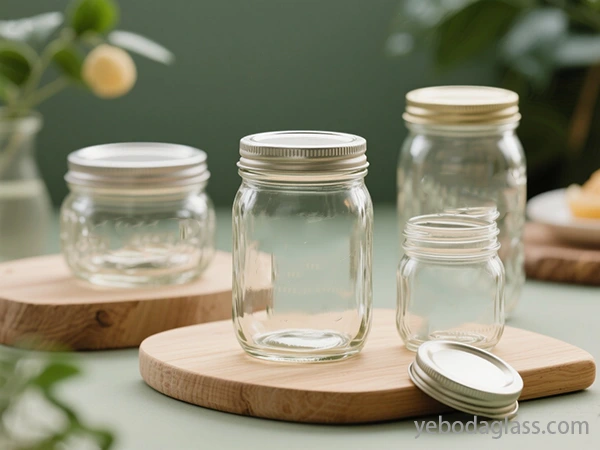
Conclusion
This series of glass mason jars launched by YEBODA is designed to solve the question of “can you freeze glass mason jars”. Its three core advantages for freezing scenarios are as follows: it uses German Schott high borosilicate glass, which has a crack resistance three times higher than ordinary glass, eliminating the risk of freezing cracking from the material; the straight-edged wide-mouth design with a thickened bottom disperses the expansion pressure from a mechanical perspective, and the patented “anti-expansion buffer ring” on the top can accommodate 10% volume expansion, effectively coping with physical changes during freezing; the can body is laser-engraved with a frozen filling line, and is equipped with a food-grade silicone sealing ring, which can withstand low temperatures of -40°C to prevent air leakage during the freezing process. Whether it is daily storage or mass production of frozen meals, YEBODA glass mason jars can protect food safety with scientific design, making the answer to “can you freeze glass mason jars” clear – not only can it be frozen, but also professionally designed to ensure that every homemade food transcends time and remains fresh and delicious.

